A Look into CJ McCollum’s Fit in a Miami Heat Back-Court
This is a very complicated time in Portland. Backlash for coaching adjustments, Damian Lillard possibly being on the way out, and much more. But while all the focus is on Lillard’s future, CJ McCollum’s future with the team doesn’t seem very strong.
Aside from the reports about a McCollum trade looking likely, let’s look at this from a realistic perspective. If things don’t work out with Lillard in Portland, it’s obvious that they’re going to make a deal for the future, acquiring picks and/or young talent. That would leave them with a clear pathway to deal McCollum as well.
If things do work out and Lillard ends up staying, there’s a common theme when a new coach joins a team: the star player is locked in, and changes are made all around him.
To that point, I may discuss Miami’s needs as a point guard and front-court pairing, but ultimately, if a high level scorer is attainable, that’s the number one priority.
Now, let’s just jump right into the game of McCollum, and how he elevates this current Heat roster. (Spoiler: There aren’t many more ideal situations than this one, aside from the unrealistic superstar acquisition talk)
The Mid-Range Assassin
There’s no better place to start with McCollum than the second level of the half-court, the mid-range area. It’s always a fun aspect to look at things, especially in comparison of what the Miami Heat currently have.
I’ve discussed the mid-range with Tyler Herro and Kendrick Nunn all season, knocking down the pull-up elbow jumper against drop. It’s not just that McCollum shoots about 7% better in that area of the floor at 48%, but it’s the way he does it.
The Heat have clearly missed that consistent mid-range gravity all season. Guys like Nunn and Herro have respectable jumpers in that area, but the opposing scouting report is where the true separation between these type of guys is made.
Teams usually scheme their defense into giving Miami’s guards that shot, while teams try to take away McCollum’s mid-range as a top 2 priority. Number one is always going to be Lillard, which further shows the worry he puts on other defenses.
The reason I said it’s the way he does it, is because he’s just an absolute bucket getter. And this goes without saying, but the Heat need absolute bucket getters.
In the play above, he gets an iso with Nunn guarding him, leaving him with the entire right side of the floor to navigate as the other four starters bundle up on the left side. Duncan Robinson tries to come over for the double to eliminate his go-to drive into a baseline fade, but McCollum’s bag is so big that he has an alternative.
Not wanting to fall into that double, he stops and throws up a pump-fake, forcing Robinson to recover back. He gets Nunn in the air, jumps into him, and still buries the tough bucket. Why is that important? Well, that’s McCollum every single night.
The other part of his mid-range excellence begins in the full-court, which could be his most polished ability. Once he gets a guy on their heels, he’s pulling that shot with confidence and there’s no way to contest it.
Even when Lillard is on the floor, McCollum gets a bunch of on-ball reps, which always look pretty good. That’s a key thing to note when discussing his fit with Miami, since I’ve been harping on the point of acquiring a guy that can play both on and off the ball, which is Miami’s offensive scheme in a nutshell.
On this play, he breaks down Miami’s 2-2-1 press as they blend back into the 2-3 zone. After blowing by Gabe Vincent and Andre Iguodala at the top, he’s now in his happy place. This is where the mid-range diversity comes into play.
He has a bunch of options from a passing perspective, but he flows immediately into his comfort shot: the floater. This may seem simple and unimportant from an evaluation state, but it’s just the opposite when discussing him in a Miami Heat offense. Downhill threats have been a staple lately, but that doesn’t always have to mean bulldozing drivers such as Jimmy Butler.
They just need a guy with a strength inside the arc that can collapse the defense. But yet, his game is far from only consisting “inside the arc.”
An Upward Three-Ball Trend?
He has always been a pretty good three-point shooter, but the volume hasn’t always been there. He’s increased the attempts slowly over the last five seasons, finally making an even bigger jump this year to just under 9 threes a game. But with that type of leap in volume, the efficiency had to have gone down, right?
Actually, it’s just the opposite.
He went from knocking down 2.8 threes a game last season to 3.6 a game this year, and the stats don’t tell the full story. Actually, stats never tell the full story. In the first clip, we see a pull-up three in transition, which is something we see quite frequently from him in Portland.
He shot 6 pull-up threes a game this past season, and that is not an easy thing to do. Above, there’s a slight hesitance, as if he’s going to drive left, before flowing right into his high lifted jumper for a transition bucket. He shot 37% on pull-up triples, which is actually the exact percentage his Portland back-court mate shot this past season too.
In the second clip, we see some more of that half-court shooting ability from three, and it continues the discussion of his bag just being so deep. Speaking of his specific go-to moves, it’s on display here, as he tries to free himself up in isolation with a simple crossover before utilizing his signature: the pull-back dribble.
That move gets him into his rhythm, just as Bam Adebayo’s jab step gets him into his shooting motion. The difference is that defenders stopped biting on the Adebayo jab for periods of time when it became predictable, while McCollum’s pull-back is never taken lightly by a defense.
The Miami Heat’s offense may not see a lot of isolation possessions, but that’s because Erik Spoelstra built it around their personnel. They don’t have a McCollum iso type to take advantage of it, but it’s pretty clear that would change if they got him in a Heat uniform.
Lastly, he could benefit from a different offensive look as well, since it’s really odd that his catch and shoot volume isn’t very high in Portland. He’s a movement shooter, but playing next to primary play-makers, in Butler and Adebayo, would mean his spot-up attempts would more than double. If that was the case, I can guarantee his shooting numbers would make another leap.
Off-Ball Freelancer
Since we’re on the topic of offensive positioning with Miami, plays like this just further my point about his utilization. I touched on his usage as an on-ball guy next to Lillard, but clearly next to a player of that magnitude, his off-ball creation must be crisp.
This possession specifically was most likely a drawn up play for the in-bound, but this type of stuff is the Heat offense. Slipping screens after passing and screening away is a staple, but I’d like to see him in a position with some extra back-screens to free him up, mostly due to the fact that Miami would plug him into that role.
He’s a sharp cutter, and putting him into some of the Robinson sets that were run this past season could really benefit his scoring, without forcing him into the role of: just be our primary scorer with the ball in your hands every night.
Lillard’s play over the years has put McCollum’s value in a weird spot in my opinion. It’s clear that he is such a skilled scorer, but the question becomes: can he be the team’s leading scorer on a contender?
Some people’s answers may differ on that subject, but I am very confident in that notion, since the unselfishness of the Heat’s current stars would probably put him in a very comfortable spot. A point guard would still be vital if they acquired McCollum, which raises his effectiveness even more.
PnR Dissector
The last part of his game that I would like to highlight is his PnR reads. Referring back to the Heat guards, a point that is harped on is their need for a screen every single possession, while McCollum can clearly create for himself.
The second part of that is the level of consistency on your PnR reads once you receive the screen, and there were some growing pains in the process for two of the Heat’s second year guards. But just take a look above at how McCollum handles these situations.
Adebayo as a screener in the high PnR truly expanded this past season, but it came down to who can take advantage of it. In the play above, he flows right into that pull-up triple that I discussed earlier. Why is this important? Well, take a look at where he’s looking when he has the ball in his hands.
Once Marvin Bagley puts his right foot back to retreat, McCollum pulls-up without even thinking. That’s what the Heat need: instinctive scoring.
In the second clip, it’s another pick and roll set, leaving him basically in a game of one-on-one with Hassan Whiteside. He knows that he’s a good shot blocker, meaning the floater or mid-range pull-up may not be the best call. Knowing he’s a bit slow footed, he goes with the euro into a one-hand push shot, fulfilling my point of his PnR dissection.
Certain guys are good scorers and others are good defensive readers. CJ McCollum is both of those things, which makes his value so much higher for a team like the Heat. It becomes a waiting game with the next steps of the Portland Trail Blazers, but it feels like a situation that Pat Riley and company would be watching closely.
Loading...
Everything Tradeshows is a one-stop-shop for trade show exhibit rentals and custom exhibit display purchase solutions to companies of all sizes.
Visit them at EverythingTradeShows or call 954-791-8882
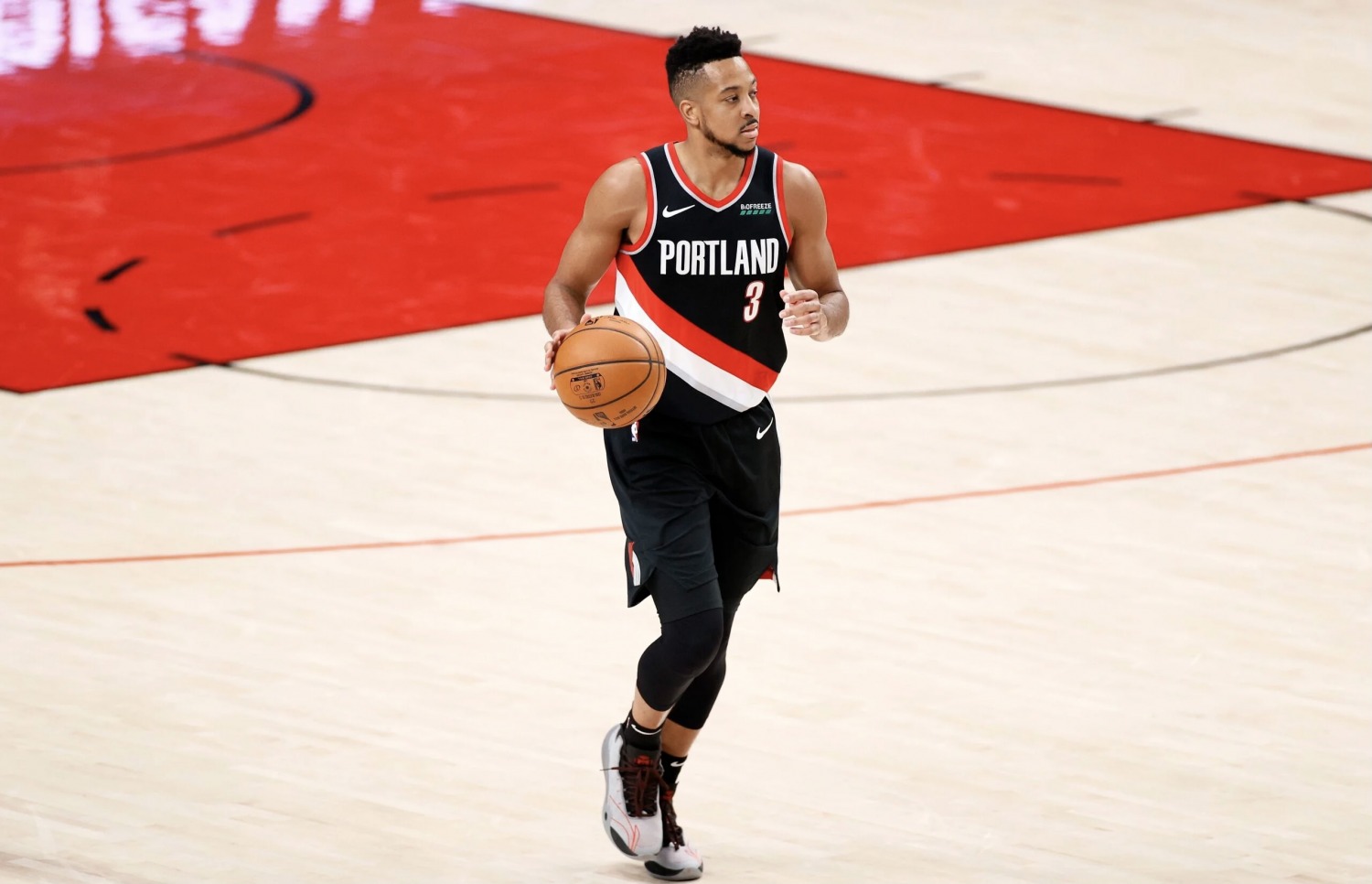
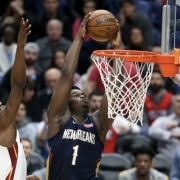
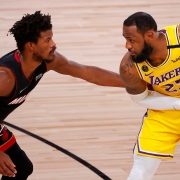
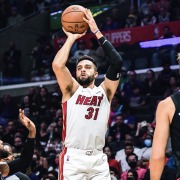
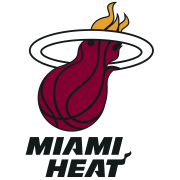
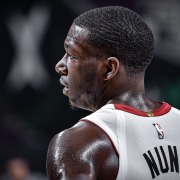



Leave a Reply
Want to join the discussion?Feel free to contribute!